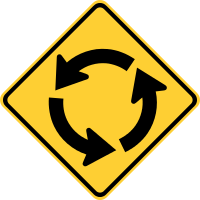In “eMission control – Focus: Roadways,” I wrote: “When I think how air quality can be adversely affected by roadway use, in order for roadway users to get the most for their hard-earned dollars, the efficiency thereof is of prime importance.
“Take the case of intersections with left-turn arrows. To me, it makes very little sense to sit behind the wheel in left-turn lanes waiting needlessly for a green arrow all in an effort to make a simple left turn. In many situations, the left-turn arrow is only lit once per traffic-signal cycle. Even when there is no opposing traffic coming from the opposite direction, motorists wanting to turn left cannot do so until the green left-turn arrow appears. It’s inefficiency to the hilt, in my opinion.”

I believe there are better approaches regarding intersection design and implementation. One of those available currently is the traffic circle (also known as the rotary and roundabout).
These devices are fairly common. In fact, I have found them in California’s central San Joaquin Valley and in Palmdale, a southern California high-desert community, for example. And from the standpoint of an interested observer and user of such, traffic circles appear quite effective at keeping traffic moving.
Without going into detail regarding the ins-and-outs of traffic-circle use, it is my observation that whoever is first to arrive, is also the first to enter.
So, what do traffic circles have to do with helping to clean the air?
It is obvious traffic delays result in more time spent behind the wheel. In an internal-combustion-engine-powered vehicle the more time devoted to driving, the more gasoline is burned. The more gasoline is burned, the greater the amount of emissions. Therefore, if time driving can be reduced, so, too, is gasoline burned and, if this is the case, fewer emissions and therefore cleaner air.
With traffic circle, rotary, roundabout use there is the potential for cleaner air.
Traffic circles: the shape of things to come?
– Alan Kandel